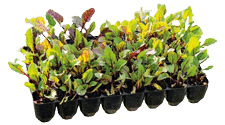Introduction
Course Overview: Mastering Watering Techniques for Your Garden
Have you always wondered when and how to water your plants correctly? Dive deep into our comprehensive course that answers all your watering queries.
🌿 Intro: We kick off with the age-old question – when and how to water? Discover the truth about watering plants under the sun, the types of water suitable for your plants, and more!
🌦 Types of Water:
- Rainwater: Learn about harvesting it from rooftops and its benefits.
- Groundwater: Explore its pros and cons, including how to check its quality.
- Surface water: Benefit from natural streams around your property.
- Tap water: Understand the do’s and don’ts of using municipal water.
💧 Water Pumping: Find out various methods to pump water, from battery-operated pumps to gasoline-powered ones, and their effectiveness.
🌱 Watering Techniques:
- Watering cans: The traditional method that provides a hands-on approach.
- Sprinklers: Understand their cost-effectiveness and potential challenges.
- Drip Irrigation: Discover the efficient way of watering directly at the roots.
- Hose with Spray Nozzle: A convenient method, especially for larger gardens.
⏳ Timers: Stay ahead with automation! Learn about using simple to advanced timers that cater to the exact needs of your garden, even when you’re asleep.
🔍 When to Water: Decipher the signs! Delve into methods to test soil moisture and understand plant signals indicating their thirst.
Embark on this enlightening journey to ensure your garden blooms to its fullest potential. Become a master at knowing precisely when and how to hydrate your plants!
Rain water
Collecting rainwater, especially if you have a greenhouse, large shed, or a garden attached to your house, can save you from using tap water. It’s also healthier for your plants.
However, sometimes the stored rainwater might not last through the dry summer months. Consider investing in larger storage containers for rainwater to last through these periods.
Groundwater
Extracted from wells, groundwater is primarily rain or ditch water that has seeped into the ground. Check its iron and salt content to prevent rust discoloration on plants and tiles.
It’s always good to inquire with neighbors or local well diggers about water quality before using groundwater.
Surface water
If there’s a ditch near your garden with flowing water, you’re in luck. Ditch water can be easily pumped for gardening, especially if groundwater in your area is discolored.
Tap water
While convenient, tap water might have a high calcium content. While this isn’t a significant concern for outdoor plants, rainwater is preferable, especially for indoor plants.
Watering Can
Though manual, watering with a can lets you inspect plants closely. It’s also a good workout!
Sprinklers
Relatively cheap and easy to install, sprinklers need good water pressure and might not be suitable for all plants due to wetting the foliage.
Drip irrigation
Though a bit pricier, drip irrigation is a sustainable and efficient way to water plants without wetting them. Depending on your soil type, adjust the number of tubes for optimal hydration.
Hose with spray nozzle
An accessory for your garden hose, a spray nozzle, especially with a long stem, is ideal for gardens. However, be cautious while dragging the hose around your garden.
Timers
For those extremely hot days, a timer can be your best friend. It ensures your garden gets watered, even when you’re asleep. Depending on your setup, there are various timers available in the market.
Test your soil
Dig a little and check if the ground beneath the topsoil is moist. Devices like moisture meters can give a quick reading of soil hydration levels.
Look at your plants
Plants often signal when they’re thirsty. However, they might also droop during hot days as a protective mechanism. Check again in the evening before watering.
When to water
Watering is best done before a hot spell. This allows the water to seep deep into the ground, reaching the plant roots effectively.
Watering when the sun shines
Myth or something to be worn off? Let’s have a quick chat about watering when the sun is out!
To much water
If you suddenly give your plants a lot of water, the fruits can burst. Ever seen cracked tomatoes? Or misshapen zucchinis? There’s a good chance it happened because they suddenly received a lot of water.
Your soil
How much and how often you should water largely depends on the soil. We are situated on fairly heavy clay soil. In winter, the water hardly drains away, leading to a lot of puddles, but in summer, the water remains in the soil longer, so we don’t need to water as frequently.
Hold on to moisture
Gardening becomes significantly easier and more successful when your soil retains moisture effectively. You can achieve this by adding organic matter like compost.
How much and how often
The amount of water needed varies with the season, your soil, and the plants you’re growing. For optimal growth, plants often require more water than you might expect, averaging several liters per week.
Closing words
That’s all you need to know about watering your garden. The key is to observe your plants’ needs and maintain the soil quality. The better your soil, the less water you’ll need.
If you have any questions, please ask in our community, and we’ll be happy to help. Thank you for watching and happy gardening!

